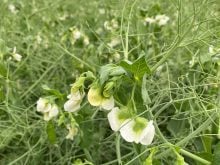Cuba’s purchase of $20 million US of food from the United States last week brings the two adversaries a little closer.
Cuba bought wheat, corn, soy and rice to make up for losses caused by Hurricane Michelle.
Last year, the U.S. modified the embargo it has had on the communist run island since 1961, legalizing sales of food. However the Cuban government said it would buy no American food until other restrictions were lifted.
Cuba says its position hasn’t changed, but the devastation caused by Hurricane Michelle presents a special, one-time circumstance.
Read Also

Crop quality looks good this year across Prairies
Crop quality looks real good this year, with the exception of durum.
But the deal appears more than that. Cuba could have bought food from South America , Europe or Canada, but it chose the U.S., probably to support the growing movement there that wants to end the embargo.
Why is this of interest to Canada’s farmers?
Cuba buys few Canadian farm products, but is sometimes an important buyer of Canadian dry beans and dry peas. In 1998-99 it was the third largest export market for these two crops. The U.S. produces few peas, but is a force in dry beans.
Canada’s pulse industry sees dry beans as the next big growth crop, but it might find marketing it a little more difficult if relations warm between Washington and Havana.
Soaring oilseed trade has been an amazing feature of the last decade.
South America, Malaysia and Indonesia have become huge producers. But growth in demand has been equally impressive, allowing prices to remain fairly steady.
The top 10 oilseed importers, including China, India, Pakistan, the former Soviet Union and countries in North Africa, have seen consumption grow by about 42 percent since the mid-1990s while their production has increased by only 32 percent.
Imports made up the short fall.
For example, India, the world’s largest vegetable oil importer, has seen its dependence on imported vegetable oils rise to about 40 percent from just three percent in 1992-93. Production has been stagnant for a decade.
Ironically, during the same time government promoted grain self-sufficiency, producing a vast oversupply of grain – an expected 75 million tonnes by next spring.
The government is now devising incentive programs to encourage domestic oilseed production. If successful, it could slow the growth of global demand and hurt oilseed prices.














